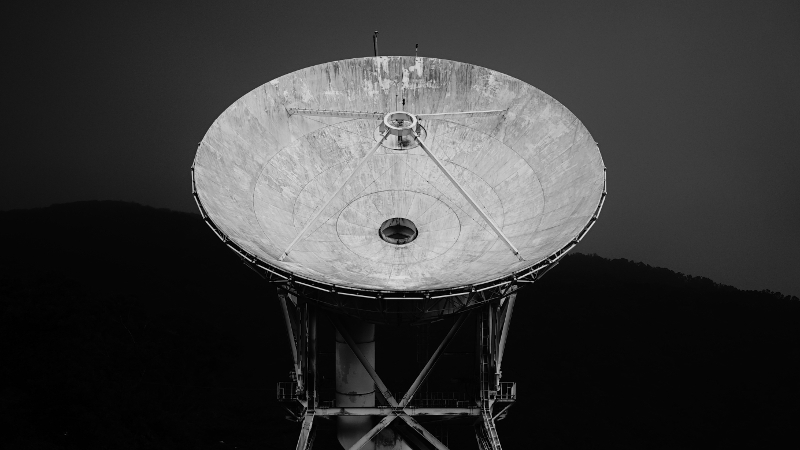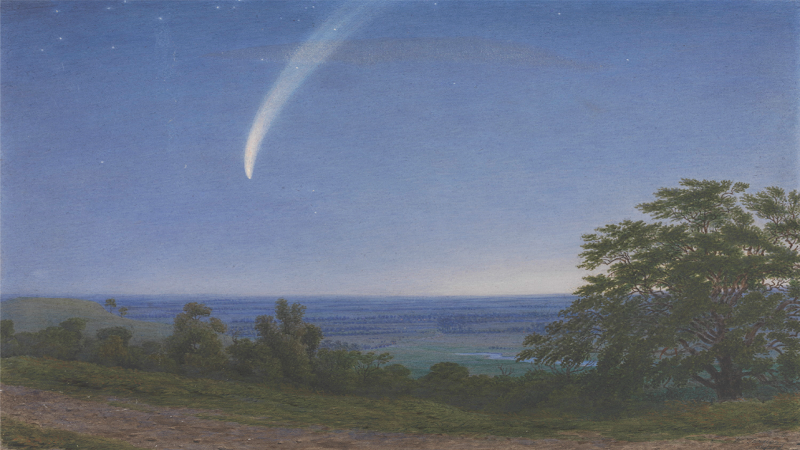
Mamy dziś dla Was materiał nietypowy, ale – jak sądzę – bardzo ciekawy. No More Fermi to powieść z gatunku hard sci-fi napisana w formie dziennika. Jej autorem jest nasz redakcyjny kolega – LLothar – który zasłynął w polskim internecie dzięki swej pasji do rozkręcania rzeczy, których nie powinien był rozkręcać (takich jak zegarek, czy komputer Arduino).
Jego powieść przedstawia przyszłość w sposób w pełni realistyczny. Nie znajdziecie tu (niestety) wielkich walczących robotów ani podróży w czasie. Zobaczycie za to bardzo wiarygodnie przedstawioną reakcję na… nie, nie zdradzę Wam o czym jest ta powieść. Będziecie musieli przekonać się sami.
No More Fermi powstało w języku angielskim, w którym LLothar na co dzień komunikuje się ze swoimi współpracownikami oraz swoim kotem. Zdaję sobie sprawę z tego, że może to być dla wielu osób pewna bariera. Cóż, zamysłu autora już nie zmienimy. Ale jestem pewien, że warto zmierzyć się z tym tekstem.
Kolejne odcinki No More Fermi będą ukazywać się na naszej stronie co dwa tygodnie. My wszyscy, a w szczególności autor, będziemy wdzięczni za wszelkie opinie i komentarze (oczywiście mogą być w języku polskim :))
DaeL
A teraz, nie przedłużając, zapraszamy Was do lektury.
20TH OF MARCH, 2026
THE MYSTERIOUS OBJECTS OF OUR UNIVERSE
Welcome to my blog! One, two, three – is this thing on? I know – bad joke.
I decided to do something productive in my spare time. Don’t get me wrong, it’s not that I’m bored with spending every waking moment on Reddit, but it feels a bit passive. Therefore, I decided to start a blog. I want to share my insights about the universe around us with a wider audience. My current friends either work with me at European Space Agency and know everything already – their words, not mine – or just say “Bob’s in his Star Trek mode again, don’t let him drink anymore”.
In this post I’d like to share with you some information about the mysterious objects in our observable universe. First, let’s start with a blast from the past, Canals of Mars.

There was once a guy named Percival Lowell. He was an American astronomer who lived in 19th and 20th century. In his life he was one of the driving forces behind the effort that led to the discovery of Pluto, he was a smart fellow. However, unfortunately for him, he is best known for the discovery of non-existent mysterious canals on Mars. He spent fifteen years of his life studying the Red Planet. In his observatory in Arizona Lowell saw elaborate channels that, he was convinced, were used for irrigation and were a definite proof of extraterrestrial life on Mars. He published not one, but three books that pushed this idea.
Lowell’s discoveries, despite skeptical opinions of other astronomers, excited the public. Today we know that his canals and oases are not there, nevertheless at the time they looked like an actual, real possibility. It took the NASA Mariner mission in the 1960s to provide us with high quality pictures of Mars, finally disproving the notion of little green men living on our closest neighbor in the Solar System. In hindsight Lowell probably should have cleaned his telescope’s lenses a little bit better.
The second mysterious object on today’s list is KIC 8462852 – it just rolls of your tongue doesn’t it? This star has been in center of attention roughly 10 years ago because it was speculated that there is a Dyson Swarm orbiting it. Speculation came from unusual blinking pattern that this star exhibited.

What is a Dyson Swarm? It could be a catchy name for a fleet of autonomous vacuum cleaners for sure, but in scientific terms it is a subset of so called Dyson Sphere. It is speculated, that with increasing demand for energy, civilizations will need to harvest the full power of their stars. This is to be done through encompassing their whole planetary system in an artificial structure that we call a Dyson Sphere. A stepping stone towards making such a megastructure would be a Dyson Swarm – set of huge satellites orbiting a star, a scaffolding of sorts for a future, bugger structure. This is essentially a solar power plant in space on a cosmic scale. A Dyson Swarm around a star would, at times, obstruct the star from our view so it would appear to be blinking in an unusual pattern.
Many times over people at Search for Extraterrestrial Intelligence project (SETI) decided to listen to KIC 8462852 for any radio transmissions – no luck. Further studies were conducted but to date they are all fairly inconclusive. I like to think, that there really is a Dyson Swarm orbiting that star, but the civilization is long gone, galactic equivalent of Pompeii, frozen in time for us to explore one day.

Last but not least on our Mystery List is a recent discovery of an object nicknamed Weird Blue Light. The newly opened Giant Magellan Telescope in Chile spotted it sometime last month. This one is really exciting, because no one has a good explanation for it, none at all. The Weird Blue Light, or WBL for short, is what the name suggests – just a source of blue light. It is roughly a twentieth of a light year from us – so really close on astronomical scale, yet really far on human scale. It emits a blue-ish light, a very narrow band of light, a wavelength of 452 nm for those wanting some technical details. No known element emits a light of such frequency.
So what can it be? For sure it is not a comet – furthest ones are couple of light-days away and they are not bright that far away from the sun. The brilliant spectacle that comets provide us is an effect of gases evaporating from their surface when they pass close to the sun. When travel back where they came from – far beyond the orbit of Pluto – they are just big chunks of ice and dirt barely detectable even with best telescopes.
WBL also can’t be a rogue planet – a planet that does not orbit around any star. It is just too bright and has a very specific narrow light spectrum. A rogue planet would reflect a wide spectrum of light, not to mention that there is very little sunlight that far away.
My money’s on some new star-like object (pulsar, neutron star and such) that we just never encountered before. Anyhow, for now it is a mystery. Earth’s brightest minds – and some common folk too – are trying to figure it out. So far the Weird Blue Light does not want to share any of its secrets.







Proponowałbym, aby wprowadzić jeszcze jakieś oznaczenia artykułów, np że ten dotyczy gry o tron, a ten np warhammera 40k, albo jakoś pogrupować to wszystko 😉
To chyba nie jest konieczne. Już po tytule wiadomo, o co kaman. Ja bym proponował zajęcie się bardziej popularnymi tytułami. Bo te dotychczasowe mogą zainteresować jedynie promil czytelników. Co widać po liczbie komentarzy pod artykułami o miodzie i tych ciężarówkach. Mrokowiecze na +, ale poza tym przydałaby się solidniejsza konkurencja dla ST.
Mamy kategorie, ale mamy też tagi. Choć te drugie pewnie trzeba jeszcze trochę dopracować.
Zapowiada się ciekawie:) Mam nadzieję, że odcinek 1 nie pełni jedynie funkcji ekspozycyjnej, w twarz rzucając nam zagadnieniami, które będą rozwikływane potem. Niemniej tytuł pozwala przewidywać, że czeka nas nietuzinkowa fabuła.
Czekam na więcej.
Całkiem miła sprawa. Oby regularnie
Na razie ciężko ocenić tekst, pomysł wydaje się ciekawy
Czekam na następną część i rozwój fabuły
Dobry pomysł z wrzucaniem fragmentów. Język nie jest trudny, więc nie stanowi dla mnie bariery, tematyka taka jaką lubię. Czekam na dalsze części.
Typowe masy gwiazd neutronowych (i pulsarów, które też są przecież gwiazdami neutronowymi) to około 2 masy Słońca. W każdym razie więcej niż 1.44 masy Słońca, która jest tzw. masą graniczną Chandrasekhara i którą musi przekroczyć obiekt, żeby zapaść się do gwiazdy neutronowej.
Z odległości 1/20 roku świetlnego wpływ grawitacyjny takiej masy obiekty Układu Słonecznego byłby mierzalny.